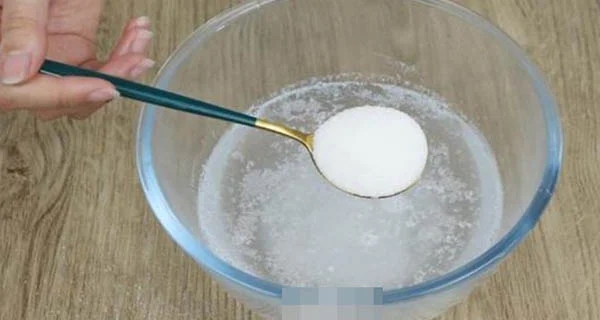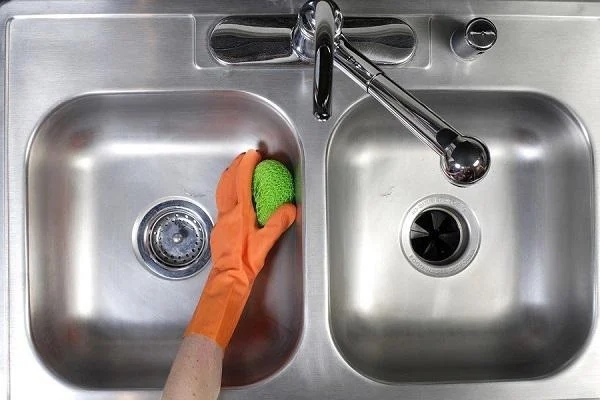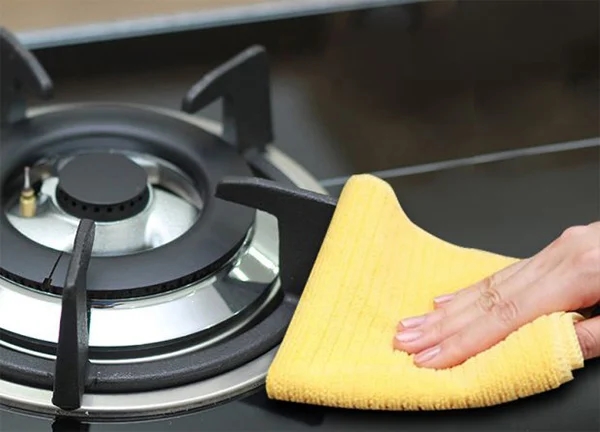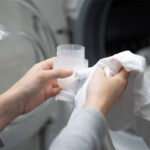White vinegar is a common kitchen ingredient, often used for cooking and food preparation. But did you know it also has antibacterial properties, making it a great disinfectant and cleaner?
On the other hand, laundry detergent is essential for keeping our clothes clean. At first glance, vinegar and detergent seem to have nothing to do with each other. But when combined, they create a powerful solution.

Instructions:
Start by pouring a capful of detergent or liquid detergent into a bowl or container. Then, add 2 caps of white vinegar and a bit of warm water, stirring to combine. Transfer this mixture into a spray bottle, and it’s ready to use! Here are some of the uses for this vinegar and detergent solution:
Clean your sink

White vinegar is acidic and has disinfectant properties, making it great for softening and removing stains. Laundry detergent, as we know, is a powerful cleaner. When combined, they create a potent cleaning mixture.
If your sink is looking a bit grimy, simply spray this solution onto the surface and wipe it down with a dishcloth. The stains will disappear, leaving your sink sparkling clean. If you don’t have a spray bottle, you can soak a cloth in the solution and apply it directly to the stain.
Mop the floors
You can use this vinegar and detergent mixture instead of your regular floor cleaning solution. It will easily remove dirt and stains from tile floors.
Clean your stovetop

After cooking, your stovetop is likely covered in grease and food residue, which can be challenging to clean with just water. Spray the vinegar and detergent solution directly onto the stovetop and walls of your kitchen. Let it sit for about 5 minutes to soften the grime, then wipe it clean with a cloth. The stains will be gone in no time!
Remove stains from faucets
Spray the vinegar and detergent solution onto your stainless steel faucet and let it sit for 5 minutes to loosen the stains. Then, use a scouring pad to scrub away the stains and rinse the faucet with clean water. If it’s not completely clean, repeat the process.
According to Xe và thể thao
The Ultimate Guide to Cleaning Snakehead Fish: Remove the Slime, Avoid the Fishy Smell
The snakehead fish is a slippery customer, both literally and figuratively. Its slimy exterior can be off-putting to those unfamiliar with its preparation, and its strong, lingering fishy odor can be a challenge to remove. But fear not, as we are here to reveal the secrets to quickly and effectively cleaning this fish, ensuring it is free of slime and any unpleasant odors when cooked. With our expert tips, you’ll be able to transform this tricky fish into a delicious and odor-free meal.
“How to Get Rid of Musty Smells and Yellow Armpit Stains on Shirts Quickly and Easily”
It takes more than just regular detergent and water to eliminate stubborn odors and yellow stains from your clothes. We present to you a few ingenious hacks using household items like vinegar, milk, lemon, gasoline, and laundry detergent to effectively remove unpleasant smells and pesky yellow stains.



































